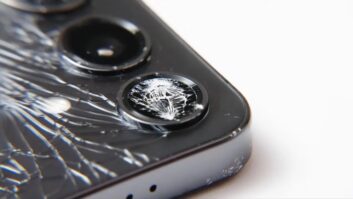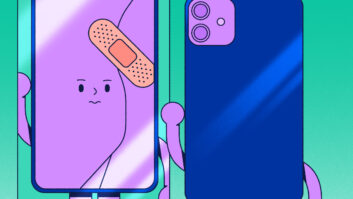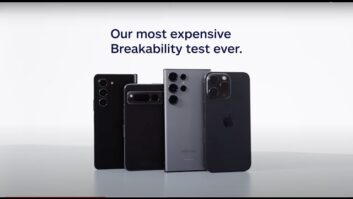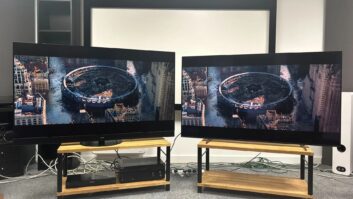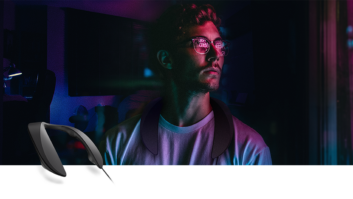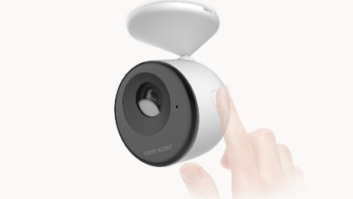To say that the first six months on the job for Panasonic chairman/CEO Yoshi Yamada and Martin Kono, president/COO, were eventful is probably an understatement.
Since July 1 the company’s name was changed from Matsushita Electric Corporation of America to Panasonic Corporation of North America; the organization was downsized, especially in sales and marketing to react more quickly to retailer needs; and, in a related development, both men continue to deal with the decision by Panasonic last spring to rely more on distributors.
In a candid interview at Panasonic’s mammoth booth during International CES earlier this month, here, Yamada and Kono discussed with TWICE what has occurred in the past six months and what plans they have for the coming year.
TWICE:What is your view of the U.S. market after being here for six months? What immediate challenges do you face?
Kono: Every six months prices drop 20 to 30 percent [on individual SKUs]. More new products are entering the market supplied by unfamiliar brands. Those products are not too bad, but ours are better.
One of my biggest challenges is to show the benefits of buying Panasonic. We want to make the brand more appealing to the end user. We want to give consumers peace of mind. For instance, when a plasma TV breaks down you have to take it [off the wall] and it can take ten days to have it fixed. What we would like to do, what we are working on, is a “white glove” service to take the stress out of a repair like this for the end user. By mid-February we will have details on this program.
TWICE: Over the past several years Panasonic has gotten more aggressive repositioning itself as a “must-have” brand for teens, young adults and women. How is that effort going? Was the name change of the company part of that strategy?
Kono:We are appealing to different demographics, so our efforts have had an impact. Panasonic has its own brand image. In Japan, Matsushita has a family image. While we would like to maintain the family image we would also like to expand the image to our customer base, to teens, women and others, that the brand is something that they like and that is cool. To do this we want to double the funding for our advertising and promotions.
Yamada: He is too conservative. I want to triple our advertising and promotions!
We are continuing a very clear program in the U.S. [using] different strategies to reach target customers. We changed our name, not just in the U.S., as a worldwide strategy to present our brand. In the U.S. the Panasonic brand is very popular. More importantly there is peace of mind when consumers buy Panasonic — reliable, friendly, easy-to-use. That’s encouraging.
TWICE:Panasonic moved to more distributor sales during 2004. Many independent retailers complained. How has the plan worked?
Kono: So far the performance has been kind of disappointing. I can see [the retailers’] point of view. They have been disappointed. We are not getting the message that we want to serve them more efficiently with distributors. We must communicate our message clearly. I want our people to call on all dealers, all segments of our [retail] channel. We want to convey messages quickly and react to their needs. We want to convey our message quickly, in person, or via IT, e-mail or phone.
Yamada:We have a fixed amount of resources and must allocate them efficiently. Yet, we will increase our [promotional] activities. We want to generate demand from consumers. It is important for us to creditably create demand to drive consumers to our retailers. We must continue our support and become a very reliable, very easy [company] to work with. We must develop trust with our retailers. And once we create consumer demand it will generate stronger sales for independent retailers, regional chains and national chains. Communication is the key.
TWICE: Panasonic has changed its organization in the past six months, giving some executives new responsibilities and laying off some employees. What was the strategy behind these moves?
Kono: We made changes on how we go to market. We were slow to respond [to market trends]. We had to simplify our organization and get rid of extra layers of management.
TWICE: If we sit down and talk again during CES next year, what do you hope your accomplishments will be by then?
Kono: I would like to tell you at CES 2006 that Panasonic branding has improved, that [consumers, retailers] have a better understanding of our product features and that it has translated in better sales.
Yamada: I have a clear picture about next year. I want to create a new digital lifestyle in the U.S. The challenge is not to talk about the technology. [Panasonic should] talk about how you can see your still pictures on a large screen TV. Digital technology can do that, so family and friends can enjoy it at the same time. We need to talk about experiences, not technology. We want to promote that experience. If you notice our plasma display ads have no specifications. We just show you a product that can help you enjoy your life. Those are the products we want to provide and that’s the message we want to present.





